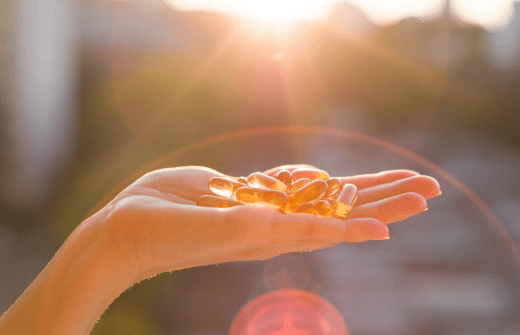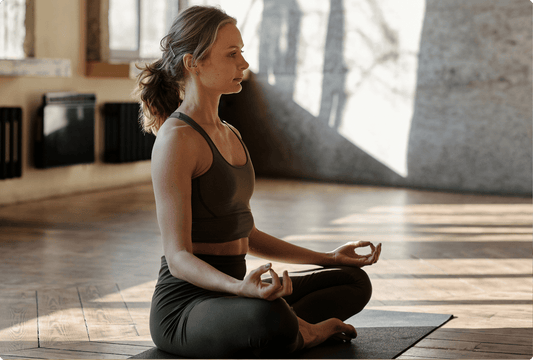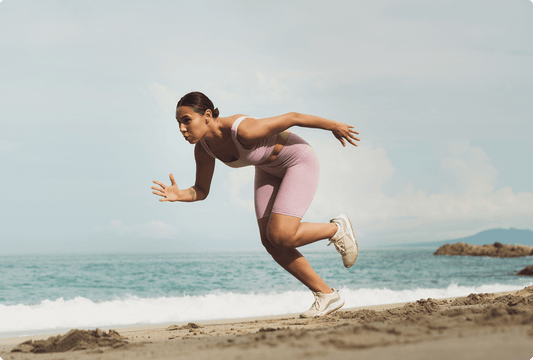Vitamin D receptor was found in nearly all cells in the body, which shows its importance and ability to protect us from many diseases.
Vitamin D strongly influences calcium and phosphorus homeostasis and metabolism, what makes it an essential factor for healthy teeths and bones. It plays a significant role in function of muscles, cardiovascular and immunity systems. Being involved in about 200 physiological reactions throughout the body is one of the most important minerals. That is a really good reason to be sure to have sufficient daily intake. But do we really have it?
Sun - the number one source of vitamin D
Vitamin D comprises a group of fat-soluble seco-sterols, called calciferols. There are two major forms of prohormones of the vitamin D3, of which are vitamin D2 (or ergocalciferol) and vitamin D3 (or cholecalciferol).
Vitamin D is not a typical vitamin, as our body can produce the major source of vitamin D3 (contributing around 90% of vitamin D intake) in skin exposed to sunlight, specifically UVB radiation.
The rest can be consumed through food, such as fatty fish, but it is quite a poor source. But synthesis of the active hormonal form of vitamin D is the result of the combined action of many factors and it is not so easy to get enough of it.
There is a cholesterol molecule at the beginning
Both precursors of vitamin D, cholecalciferol and ergocalciferol, are biologically inactive, so our body has to convert them to biologically active forms first. Let's explain the whole metabolism pathway on the main source of vitamin D - cholecalciferol.
We have a special cholesterol molecule under the skin. After UVB rays hit a person’s skin, processes inside the tissue start making vitamin D for the body to use. It enters the circulation and is transported to the liver cells where hydroxylated to form 25-hydroxyvitamin D (calcidiol). This form is 5 times more potential, but is still inactive until it is finally converted in kidneys to 1α,25-dihydroxyvitamin D (calcitriol). This is the biologically active form of vitamin D, circulating as a hormone in the blood and influencing calcium and phosphorus metabolism.
What factors can influence the vitamin D3 synthesis?
As mentioned, synthesis of vitamin D active form is a complex process depending on many factors, not only on synthesis in the skin cells, healthy livers, kidneys or health of our gut. There are other factors which undermine our vitamin D levels, These include, the thickness of the ozone layer, air pollution, season, cloud cover, geographical location and latitude we live, as well as time of the day, age or colour of our skin. All these things can influence the intensity of the sunshine and vitamin D synthesis.
Solar UV radiation (290–400 nm) comprises 90–100% UVA (320–400 nm) and 0–10% UVB (280–320 nm). The action spectrum for cutaneous pre-vitamin D3 synthesis shows that only UVB radiation initiates synthesis.
The amount of solar UV reaching Earth is influenced by the height of the Sun in the sky and therefore, changes with the seasons. During summer we receive approximately 3 times more amount of solar UV than during winter months. Throughout the day the intensity of UVB changes - the maximum is reached between 11 and 15 hours. Also 1–2 degree difference in latitude can have a significant effect on the intensity of the sun’s ultraviolet radiation and on vitamin D status. U.V. Intensity increases with elevation, with every 1000-foot increase in height, U.V. levels increase by about 4%.
High melanin level not only protects skin from the sun's ultraviolet rays but at the same time inhibits the production of vitamin D in the skin. People with dark skin will need to spend longer in the sun to produce the same amount of vitamin D, because the synthesis takes more time than to someone with lighter skin. Also aging reduces vitamin D production in skin.
Most adults suffer vitamin D deficiency. However, some groups — particularly people who are obese, older, children, long-term bedridden patients, people working night shifts may have lower levels of vitamin D due to their diets, little sun exposure or other factors. One of the mechanisms suggested for low vitamin D status in obesity was
decreased bioavailability of vitamin D due to sequestration in adipose tissue. Each 10 kilograms of overweight can increase the need for vitamin D by 17%.
Risk factor of vitamin D deficiency is in general modern lifestyle, including lack of exercise, inadequate amount of vitamin D in food, and low sun exposure.
Impact of indoor living
We spend a large part of the working day in the office or car. Many sunny weekends we stay comfortable at home or in a shopping centre instead of going outside. And if we finally go out to take a sun, we use a high factor of suncream which unfortunately protects us not only from the negative effects of sunlight, but also from the possibility of its beneficial benefits.
Can we have enough vitamin D by natural way?
There are many different information and recommendations regarding daily intake. Some inform us that we can get enough vitamin D by natural way (mainly from the sun exposure, without considering UV light and its effects, skin cancer and premature aging come to mind). But can we stay comfortable with this?
Many studies have demonstrated that Vitamin D insufficiency is very common worldwide including countries with sunshine during the whole year. So considering our geographical location it seems to be inevitable to use supplements containing vitamin D in winter time. During summer we should be able to get some vitamin D naturally from the sun, if we spend enough time outside.
There is an easy way to find out if we really get enough. During March till September aim to get 10–30 minutes of midday sunlight (between 11 - 3 p.m.), several times per week. Are you usually working at this time? So try to make the maximum days posible. Also do not forget to eat quality and good sources of vitamin D, e.g. oily fish – such as salmon, sardines, herring and mackerel or egg yolks. And after summer, ask your doctor to get vitamin D level tests.

Tips how to boost vitamin D intake
- Sun is one of the best sources of this nutrient, aim to expose to sunlight 10 - 15 minutes a day between 11 - 3 p.m. (people with darker skin should remain in the sun a little bit more time). If you plan to be out in the sun for long, cover up with suitable clothing, wrap-around sunglasses and apply at least SPF15 sunscreen. But it is not only non recommendable to spend more time, but even counterproductive. Dark colour after tanning looks great but it is also a kind of protection from the harmful effects of sunlight. Melanins are a diverse group of pigments that give rise to color in our skin, hair, and eyes and one of the most important functions is protective. When UVB rays penetrate our skin, they cause damage to our cells, which can lead to skin cancer. To stop this, the body releases melanin, which absorbs the UVB rays to protect our cells.
- Suncream with more than 30 SPF can inhibit the body's production of vitamin D.
- Your body can't make vitamin D if you're sitting indoors by a sunny window because ultraviolet B (UVB) rays (the ones your body needs to make vitamin D) can't get through the glass.
- To optimize your vitamin D level, avoid a shower straight after the sun exposure.

















